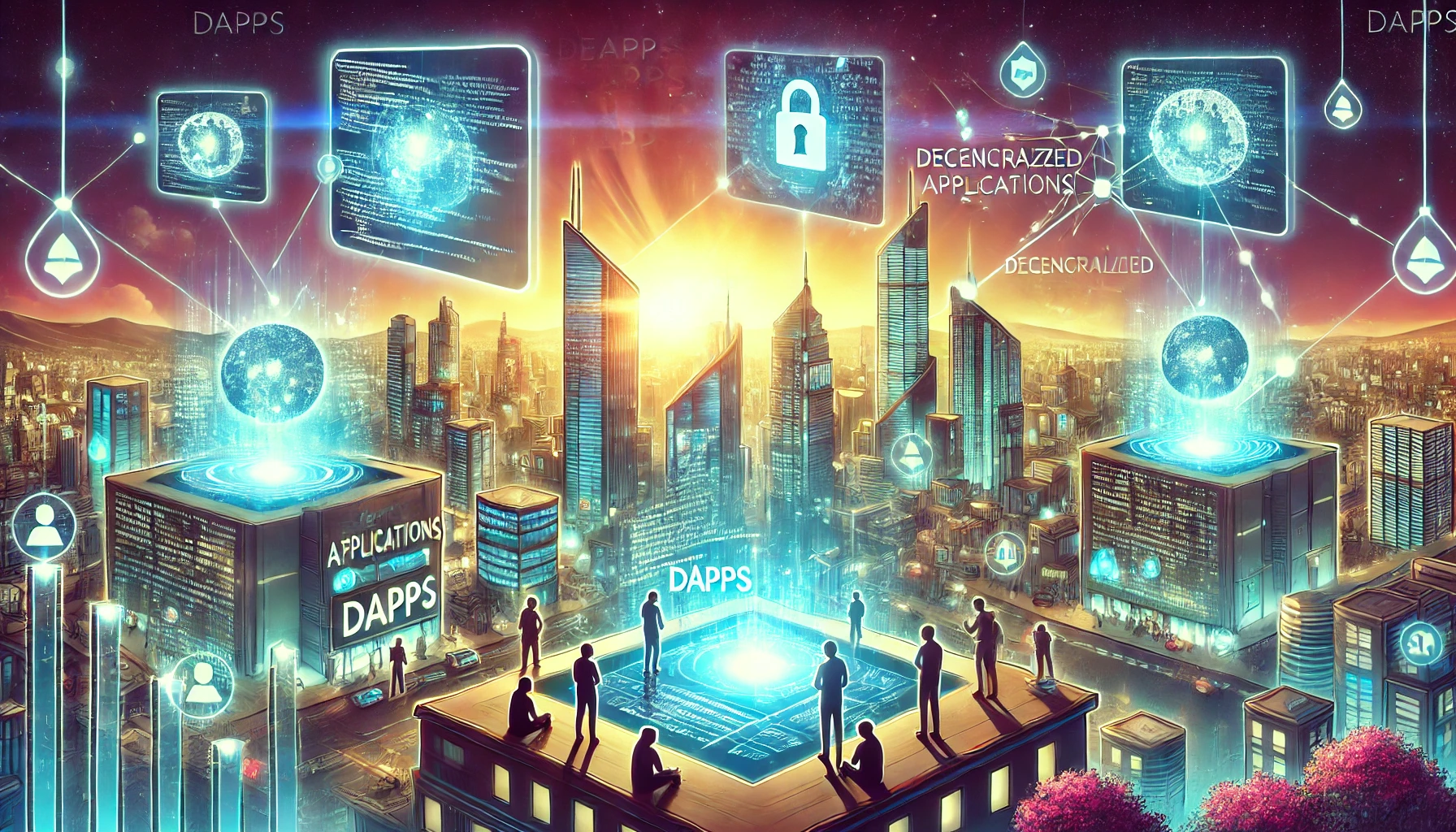Decentralized applications (dApps) represent a new paradigm in software development as they use blockchain technology to create applications that operate on a peer-to-peer network, rather than centralized servers. This article examines in detail how dApps work, describing their key principles, underlying technologies, and highlighting both the advantages and challenges they face.
- Introduction to dApps
- Principles of Decentralized Application Development
- Key Benefits of dApps
- Challenges Faced by dApps

Introduction to dApps
dApps, or decentralized applications, are applications that function on a blockchain network of many computers, rather than on a single computer. These applications are distinguished by open source code, autonomy, and server code running on a decentralized peer-to-peer network. Unlike traditional applications hosted on centralized servers, dApps directly connect users and service providers, eliminating intermediaries. This not only reduces costs but also increases transparency and trust among participants.
The main technologies that underlie dApps can be highlighted
- Blockchain
The central element of each dApp is blockchain — a distributed ledger technology (DLT) that records transactions across many computers in such a way that confirmed transactions cannot be altered retroactively. This technology underpins cryptocurrencies such as Bitcoin and Ethereum, and provides a high level of security thanks to its cryptographic methods and decentralized nature.
- Smart Contracts
These are self-executing contracts with the terms directly written into code. They run on blockchain networks, with Ethereum being the most well-known platform for developing dApps. Once a smart contract is deployed, it can act as a neutral party in transactions, automatically executing and enforcing terms when necessary.
- Consensus Mechanisms
These protocols ensure that all nodes in the network consistently see the current state of the distributed ledger. Proof of Work (PoW) and Proof of Stake (PoS) are two of the most commonly used consensus mechanisms in blockchain networks. PoW requires significant computational resources, while PoS selects validators depending on the amount of their investment in the relevant cryptocurrency.
Principles of Decentralized Application Development
The process of developing decentralized applications (dApps) is multi-stage and requires careful planning, thorough testing, and strict implementation. This distinguishes the development of dApps from creating traditional applications, as developers must consider unique aspects of working in a decentralized environment, such as interacting with blockchain, ensuring the security of smart contracts, and optimizing performance under limited network bandwidth. Each stage in the lifecycle of a dApp has its key tasks and challenges that need to be addressed to create a successful and reliable application.
| Development Stage | Description |
|---|---|
| Design and Specification | At this initial stage, developers define the structure of the application and interactions between its various components. This includes choosing the appropriate blockchain, defining the requirements for smart contracts, and developing the user interface. |
| Smart Contract Development | Using programming languages such as Solidity (for Ethereum), developers create the logic that will control their dApp in the form of smart contracts. |
| Testing | Before launching the application, it is crucial to conduct thorough testing of the smart contracts and the dApp itself to eliminate any errors. This stage is critically important, given the immutability of smart contracts after deployment. |
| Deployment | After successful testing, the dApp is deployed on the blockchain, which includes uploading the smart contract to the blockchain and integrating it with the user interface. |
| Maintenance and Updates | Although smart contracts are immutable, developers can create update mechanisms and maintain changeable parts of the dApp, such as the user interface and other components. |
Key Benefits of dApps
Decentralization
Decentralized applications (dApps) operate based on a peer-to-peer network, which allows them to function without centralized control. This eliminates the possibility of intervention or control by a single central authority, providing a high degree of independence and freedom for users. This structure significantly increases the resilience of applications to censorship, as the absence of a single control point makes blocking or restricting the service a much more complex task. In addition, decentralization promotes the strengthening of user autonomy, giving them more control over their data and interactions.
Transparency
One of the key aspects of blockchain technologies, which underlie dApps, is transparency. All transactions conducted in the blockchain are recorded in a public ledger, making them accessible for verification by any interested party. This strengthens trust between users and developers, as each step in any transaction or process can be tracked and verified. This degree of openness eliminates opportunities for fraud and corruption, as all actions are visible and subject to scrutiny, reducing the likelihood of opaque manipulations.
Security
Thanks to the decentralized and cryptographically protected structure of the blockchain, dApps have a high level of security. Decentralization eliminates a single point of failure, making it difficult for hackers to attack and making the system more resistant to various external threats. In addition, the use of cryptography to protect data and transactions ensures their integrity and confidentiality, minimizing the risks of leakage and unauthorized access.
Cost Reduction
The absence of intermediaries in dApps not only simplifies and accelerates processes but also reduces the cost of transactions. In traditional systems, intermediaries such as banks or payment systems can charge significant fees for their services. In blockchain-based systems, these costs are reduced, as operations are conducted directly between users without the need for third-party involvement. This makes dApps particularly attractive in financial and commercial applications, where reducing transaction costs can significantly enhance economic efficiency.
Combining these advantages, dApps offer a powerful new approach to building and using technology, which can radically change many aspects of the digital economy and online interactions.
Challenges Faced by dApps
Although decentralized applications (dApps) offer significant advantages, they also face a number of serious challenges that can limit their application and dissemination. These challenges include technical limitations, usability issues, and legal uncertainties that affect the development and implementation of dApps on scales comparable to traditional digital solutions. This section will examine these challenges in detail to better understand the challenges facing this innovative technology.
Scalability: Blockchain networks, especially those like Ethereum, face scalability limitations, which can lead to high fees and slow transaction processing.
Usability: The user experience with dApps often falls short of traditional applications, with more complex interfaces and lower performance.
Regulatory Uncertainty: As the technology is relatively new, the legal status of dApps in many jurisdictions remains uncertain, which can create risks for developers and users.
dApps are at the forefront of using blockchain technology to create decentralized and secure applications. They offer significant benefits in terms of security, transparency, and potential cost reductions, but they also face a number of problems such as scalability and legal uncertainty. As technologies mature and more effective tools and frameworks are developed, the future of dApps looks promising, ready to radically change our approach to interacting with digital services.






